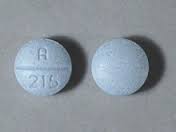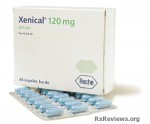Roxycodone is an analgesic, partly synthetic opioid, synthesized from thebaine. It was developed in 1916 in Germany. It was a new partly synthetic opioid, obtained in an effort to improve the existing opioids: morphine, diacetylmorphine (heroine) and codeine. It is represented at the market both in the solid form and in solutions. The main response for the obtaining of Roxycodone is a Diels-Alder reaction.
Indications for use
The treatment of acute and chronic pains, anesthetic in oncology. Roxycodone has a moderate analgesic effect. It can is more effective for acute pains than for the prolonged pain. 10 mg of orally taken Roxycodone are equal in their efficiency to 20 mg of oral morphine sulphate, 30 mg of oral codeine, 5 mg of intramuscular oxycodone and 33 mg of intramuscular morphine sulphate.
The drug addicts also paid attention to this drug. In the case of abuse, the signs of poisoning are similar to the use of codeine. Roxycodone can partially suppress the withdrawal syndrome in people taking some other drug.
The consequences of using Roxycodone
The chronic use of Roxycodone causes the development of tolerance, so that the patient requires higher and higher doses of substance to achieve the desired effect. After a while, Roxycodone causes physical addiction, accompanied by the withdrawal syndrome in the absence of the drug.
Long-term use can lead to the heightened drug tolerance, so that it is necessary to increase the dose for the achievement of initial effect. Eventually, the drug cause addiction and withdrawal syndrome, which includes the state of anxiety, muscle and bone pains, insomnia, diarrhea, vomiting, attack-like feeling of cold, involuntary leg movements.
External signs of taking Roxycodone
Serious risk, caused by the intake of Roxycodone is a depressed respiration. Other common side effects include: constipation, sickness, sedative effect, vertigo, dry mouth, sweating and weakness. It can also cause skin rashes, urticaria and itching, and even overdose or death. People abusing this substance experience its, effect for 5 hours. So-called “buzz” is similar to that caused by the opiates- sedative effect, accompanied by euphoria.





